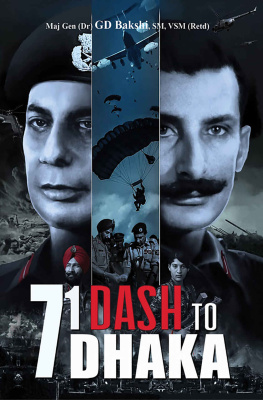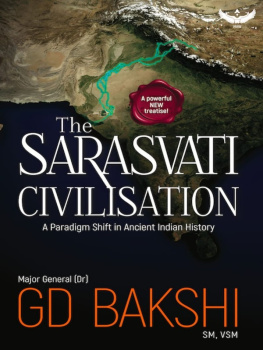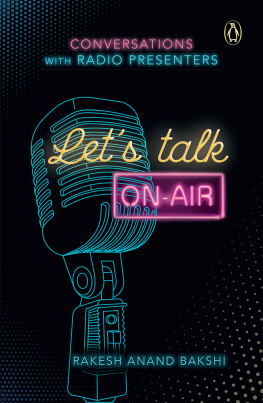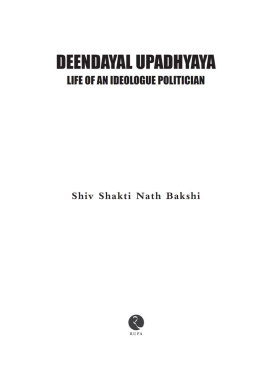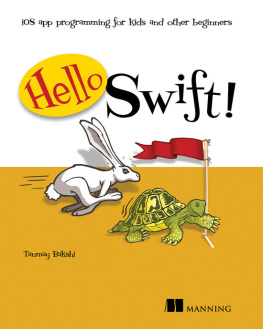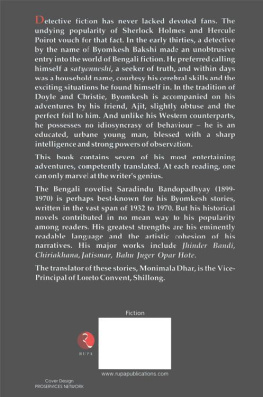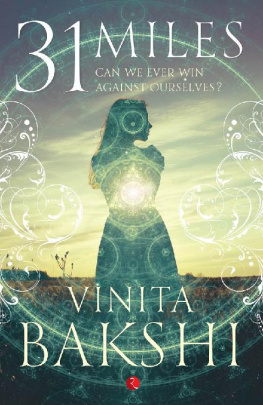Maj. Gen. GD Bakshi - 71 Dash to Dhaka
Here you can read online Maj. Gen. GD Bakshi - 71 Dash to Dhaka full text of the book (entire story) in english for free. Download pdf and epub, get meaning, cover and reviews about this ebook. year: 2020, publisher: KW Publishers, genre: Politics. Description of the work, (preface) as well as reviews are available. Best literature library LitArk.com created for fans of good reading and offers a wide selection of genres:
Romance novel
Science fiction
Adventure
Detective
Science
History
Home and family
Prose
Art
Politics
Computer
Non-fiction
Religion
Business
Children
Humor
Choose a favorite category and find really read worthwhile books. Enjoy immersion in the world of imagination, feel the emotions of the characters or learn something new for yourself, make an fascinating discovery.
- Book:71 Dash to Dhaka
- Author:
- Publisher:KW Publishers
- Genre:
- Year:2020
- Rating:5 / 5
- Favourites:Add to favourites
- Your mark:
- 100
- 1
- 2
- 3
- 4
- 5
71 Dash to Dhaka: summary, description and annotation
We offer to read an annotation, description, summary or preface (depends on what the author of the book "71 Dash to Dhaka" wrote himself). If you haven't found the necessary information about the book — write in the comments, we will try to find it.
71 Dash to Dhaka — read online for free the complete book (whole text) full work
Below is the text of the book, divided by pages. System saving the place of the last page read, allows you to conveniently read the book "71 Dash to Dhaka" online for free, without having to search again every time where you left off. Put a bookmark, and you can go to the page where you finished reading at any time.
Font size:
Interval:
Bookmark:
DASH TO DHAKA
DASH TO DHAKA
Maj Gen (Dr) GD Bakshi , SM, VSM (Retd)

Copyright 2020 GD Bakshi
All rights reserved. No part of this publication may be reproduced, stored in a retrieval system, or transmitted in any form or by any means, electronic, mechanical, photocopying, recording or otherwise, without the prior written permission of the copyright owner.
ISBN978-93-89137-32-3Paperback
ISBN978-93-89137-33-0ebook
Published in India by Kalpana Shukla

KW Publishers Pvt Ltd
4676/21, First Floor, Ansari Road
Daryaganj, New Delhi 110002
Phone:+91 11 23263498/43528107
Marketing:
Editorial:
Website:www.kwpub.com
The content of this book is the sole expression and opinion of its author(s), and not of the publishers. The publishers in no manner is liable for any opinion or views expressed by the author(s). While best efforts have been made in preparing the book, the publishers makes no representations or warranties of any kind and assumes no liabilities of any kind with respect to the accuracy or completeness of the content and specifically disclaims any implied warranties of merchantability or fitness of use of a particular purpose.
The publisher believes that the contents of this book do not violate any existing copyright/intellectual property of others in any manner whatsoever. However, in case any source has not been duly attributed, the publisher may be notified in writing for necessary action.
Contents
Dedicated to all ranks of the Indian Armed Forces and the Mukti Bahini who laid down their lives for the Liberation of Bangladesh.

My personal tribute to 2/Lt Arun Khetarpal PVC 2/Lt MPS Chowdhury and 2/Lt RM Naresh who, along with so many others of our batch were martyred in this war.
The 1971 War for the liberation of Bangladesh was Indias greatest Military victory since Chandra Gupta Maurya(and his mentor Kautilya) defeated Selukes Niketor (Alexanders Satrap in Kabul) and made him cede the provinces of Afghanistan and Baluchistan. India had now acquired a scientific frontier along the Hindu Kush. Some 2000 years later, the 1971 war broke Pakistan in two, saw the march on an enemy capital and its capitulation. India ushered in a regime change with the force of arms - 93,000 Pakistani soldiers surrendered in Bangladesh. It was the largest mass surrender of troops since the Second World War. It was a civilisational conflict of epic proportions and marked the revival of the Indian State as a major Military Power. It was our greatest military victory in the past 2000 years. In 2021 Dec we will be celebrating the 50th Anniversary of this great war and magnificent victory.
In 2018, I had published a comprehensive account of this campaign in my book 1971: The Fall of Dacca . In this book I present an even more comprehensive and detailed account. Some portions have been deliberately fictionalised to facilitate cinematic presentation. The story, in the original, however is an epic saga of monumental proportions. It shows us what Indians can do, when we get our act together. In 1971 we changed the map of South Asia.
Maj Gen (Dr) GD Bakshi
SM, VSM(Retd)
PROLOGUE
The Bangladesh War: Revival of an Indian Paradigm of War Fighting
No army can withstand the strength of an idea whose time has come.
Victor Hugo
The 1971 War for the Liberation of Bangladesh was a historic and epochal conflict that decisively changed the map of South Asia and created a new nation-state with the force of arms. It was a classic tri-service campaign that exhibited dramatic levels of synergy and coordination. It witnessed the march upon an enemy capital, enforced regime change and the mass surrender of armies. These are the hallmarks of a decisive military campaign. The Bangladesh War was a landmark conflict of that era because it broke the Cold War-era pattern of stalemated conflicts, where no victor or vanquished was allowed to emerge for fear of escalation and the involvement of the two nuclear armed super-powers of that era. The super powers would simply not let their client states get defeated or militarily overwhelmed. India broke this pattern by winning an outright military victory a first in that era of stalemated and limited conflicts. What is even more creditable was the fact that this was achieved in the teeth of fierce opposition by the United States, militarily the strongest super power of the world.
In purely historical and civilisational terms alone, it was Indias greatest military victory since Chandragupta Maurya (who, under the mentorship of the legendary Chankya/Kautilya) had defeated the Greek Satrap Selukos Niketor and forced him to cede Afghanistan and Baluchistan in 305 BCE. Thus India had acquired a scientific frontier that controlled the key invasion routes via the Khyber and Bolan passes and had put a stop to the entry of marauding armies like the Greek Phalanxes of Alexander, who had mounted a brutal invasion of the Indus Valley tracts in the 3rd century BC. For the first time in India we saw foreign armies slaughtering civilians in the towns and villages who were in no way involved in the hostilities. Such genocide and depredations had to be checked, hence the need for such a scientific frontier that controlled the key passes. This was something that the British Empire had sighed for in vain many centuries later. In civilisational terms this historic campaign had marked the acme of Indian military power. It had unified the whole of India for the very first time as a highly centralised and powerful state whose economy could generate the huge surplus needed to raise a mighty standing army of 650,000 infantry, 9000 war elephants, 20,000 cavalry and some 3000 war chariots. Just as in the Chinese period of the Warring Kingdoms (where six major states had fought incessantly for over 300 years) there were then 16 major states (or Mahajanapadas ) in the India of that period. Just like Emperor Shi Huang Ti had unified all under heaven by defeating the six warring states, Kautilya had brought about the creation of a pan-India empire that had equally unified all under heaven. India was transformed from a loosely knit civilisational entity into a highly centralised empire that had politically unified the whole land mass of the Indian sub- continent under one Chakravartin (all conquering) Ruler. That was indeed the acme of Indian military power- a benchmark that could rarely be equaled and never surpassed. The national emblem of India the Lions of Ashoka that today form the seal of government and adorn the rank badges of our armed forces and police, date back to the Mauryan Era.
In the 1971 War for the liberation of Bangladesh, however, the Indian civilisational state had touched a new peak of military glory. It marked a Renaissance of Indian military arms in fact an Indian Military Revival of epic proportions. In military terms it was the rise of the Indian Phoenix from the ashes of a thousand years of military defeats and humiliations. It was as if the wave of Indias civilisational history had touched its very nadir and then risen once more to a magnificent apogee a maxima in a sine curve of military power. Curiously enough, just in the manner the 1971 war was fought, we saw a wholly unintended resurrection of the Indian paradigm of war-fighting that had been crystallised by the redoubtable Kautilya some 2300 years ago. This war fighting paradigm had been crystallised in the multipolar environs of an Indian period of the warring kingdoms that had lasted almost for 1000 years and spanned the epic periods of the Ramayana and Mahabharata . At the culmination of this historic period had come the legendary Chanakya who had penned Sun Tzus equivalent of The Indian Art of War . This manuscript is now famous as the Artha Shastra . Chinese military writers claim that Sun Tzus classic The Art of War was written in a period of multi-polarity in China. Today, we have the same multi-polar power equation emerging at the global level. Hence the lessons of the warring states era are highly relevant in todays context of multi-polarity. The same can be said of Kautilyas Artha Shastra . It was written in an era of multi-polarity in India, wherein 16 Mahajanapadas were constantly fighting with one another for supremacy. The lessons of this multi-polar environment therefore are highly relevant to the modern era. The Bangladesh War highlighted the fact that the Indian paradigm of war fighting that had crystallised in the Mauryan epoch unconsciously emerged in the way that India fought the 1971 War. It put the spotlight on the fact that India did indeed have a strategic culture that has remained constant overtime.
Next pageFont size:
Interval:
Bookmark:
Similar books «71 Dash to Dhaka»
Look at similar books to 71 Dash to Dhaka. We have selected literature similar in name and meaning in the hope of providing readers with more options to find new, interesting, not yet read works.
Discussion, reviews of the book 71 Dash to Dhaka and just readers' own opinions. Leave your comments, write what you think about the work, its meaning or the main characters. Specify what exactly you liked and what you didn't like, and why you think so.

